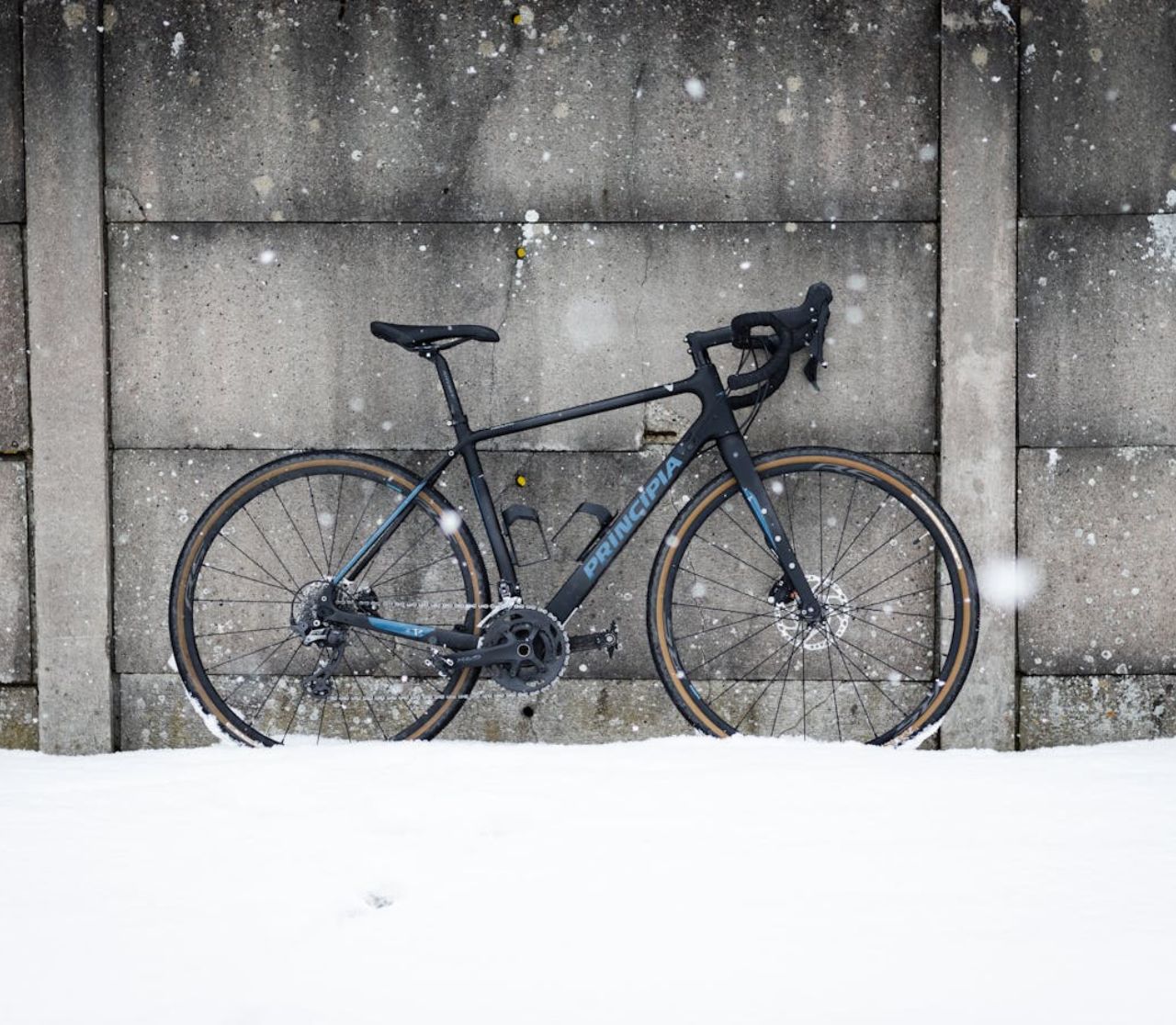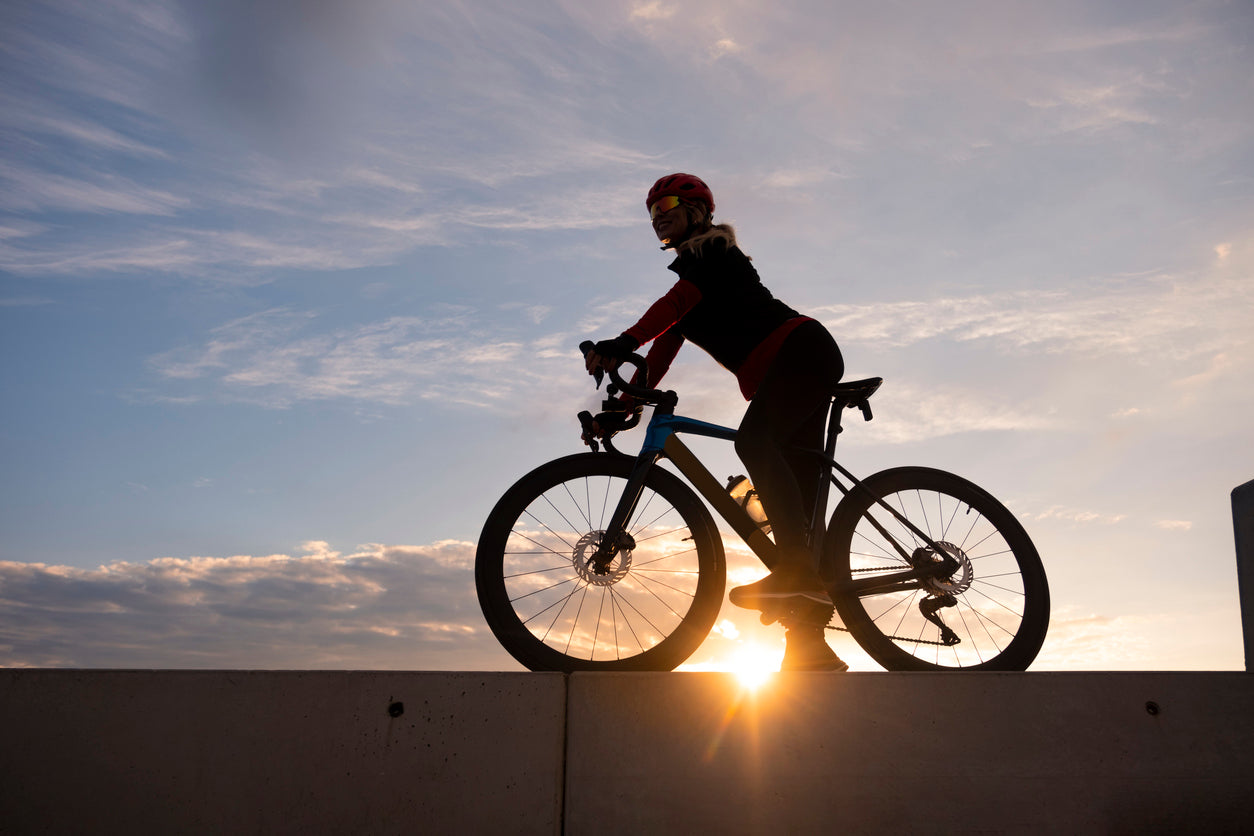Winter.
The word itself can send shivers down the spine of even the most dedicated cyclist. Gone are the long, sun-drenched rides of summer, replaced by biting winds, relentless rain, and the ever-present temptation to curl up on the sofa with a warm drink. But, as any serious cyclist knows, winter doesn't have to mean hibernation. In fact, it can be a crucial period for building strength, endurance, and mental fortitude, setting the stage for a stellar cycling season come spring. The challenge, of course, lies in staying motivated when every fibre of your being is telling you to stay indoors. So, how do you conquer the winter chill and keep those wheels turning? Let's have a little think about some tried and tested strategies to keep you peddling through the frosty months.

Your Winter Compass
One of the biggest hurdles to winter training is the lack of immediate gratification. Summer rides offer the reward of warm sunshine and the sheer joy of being outdoors. Winter rides, on the other hand, can feel like a slog, with little apparent payoff. This is where the power of goal setting comes into play. Having a clear objective, no matter how small, can provide the necessary motivation to brave the elements. Instead of a vague notion of "staying fit," set specific, measurable, achievable and relevant goals. For example, aim to ride a certain distance each week (e.g., 50km or 100km), climb a specific number of meters or improve your average speed on a particular route. These goals should be challenging yet attainable, providing a sense of accomplishment as you tick them off (we love a nice list of things and we love to tick them off - there’s a very LARGE whiteboard in the VeloFlamingo HQ with many lists…..!)
Consider setting a long-term goal for the spring, such as completing a sportive or a challenging local ride.
This gives you something to train for throughout the winter, providing a light at the end of the tunnel. Breaking down larger goals into smaller, more manageable steps can also be helpful. Instead of focusing on the daunting task of training for a 100km ride in the spring, focus on completing a certain number of shorter rides each week, gradually increasing the distance and intensity as winter progresses. Cycling isn't just about peddling as we all know though. A well-rounded training programme incorporates various activities to build overall fitness and prevent injuries. Winter is the perfect time to focus on cross-training, not only to maintain your fitness but also to add some variety to your routine and prevent burnout. Activities like swimming, running, strength training and yoga can complement your cycling training by working different muscle groups, improving cardiovascular fitness, and enhancing flexibility (we harp on about yoga so much but it really is the bees knees….!)
Swimming is an excellent low-impact exercise that works the entire body, improving cardiovascular fitness and building endurance. Running can also be a great way to improve your cardiovascular fitness and strengthen your legs. Strength training is crucial for cyclists, as it helps build power, improve stability and prevent injuries - make sure to focus on exercises that target the muscles used in cycling, such as squats, lunges, and calf raises.
Building a Powerful Engine
As mentioned above, strength training is a cornerstone of a well-rounded cycling program, especially during the winter months. While some cyclists shy away from the gym, fearing it will make them bulky, the right kind of strength training can actually enhance cycling performance. Focus on compound exercises that work multiple muscle groups simultaneously, such as squats, deadlifts, lunges, and push-ups. These exercises not only build strength but also improve power output and endurance on the bike. Incorporate strength training into your routine two to three times a week, allowing for adequate rest between sessions. Start with lighter weights and gradually increase the load as you get stronger. Proper form is crucial to prevent injuries, so consider working with a qualified trainer to learn the correct technique. Don't neglect your core muscles, as they play a vital role in stability and power transfer on the bike. Plank variations, Russian twists, and bicycle crunches are excellent exercises for strengthening your core (we pretend to like doing them, but we don’t!).

Finding Your Winter Groove
Let's face it, battling the elements on a cold, wet day isn't everyone's idea of fun. But winter training doesn't have to be a miserable experience. Finding ways to make your rides more enjoyable can significantly improve your motivation and adherence to your training plan. One simple trick is to invest in good quality winter cycling gear (we know a good company that can sort you out from head to toe. Hint hint!). Waterproof jackets, thermal bib tights, warm gloves and overshoes can make a world of difference in terms of comfort and enjoyment. When you're warm and dry, you're much more likely to enjoy your ride, even in less-than-ideal conditions.
Vary your routes to keep things interesting - we’re guilty of doing the same handy routes over and over but we’ve recently started some new winter routes which actually helps to keep things a bit more interesting. Explore new roads, find challenging climbs or simply enjoy the different scenery that winter offers. Riding with friends can also make winter training more enjoyable. Having a riding buddy not only provides companionship but also helps you stay accountable and motivated. You can push each other to achieve your goals and celebrate your successes together.
The Turbo
When the weather is truly atrocious, and venturing outdoors is simply not an option, the turbo trainer can be your best friend. Indoor training sessions can be incredibly effective for maintaining fitness, improving power output and working on specific aspects of your riding, such as cadence and intervals. While some cyclists find indoor training monotonous, there are ways to make it more engaging. Invest in a good cycling app, such as Zwift or TrainerRoad, which offer interactive workouts, virtual courses and even online races. Listening to music, podcasts, or audiobooks can also help pass the time and make your indoor sessions more enjoyable.
Ensuring your bike is in top condition is crucial for both safety and performance. Regular maintenance can also help you feel more prepared for winter training rides. Before each ride, check your tyres for proper inflation and any signs of wear or damage. Lubricate your chain regularly to ensure smooth shifting and prevent rust. Inspect your brakes to make sure they're working effectively. If you're not comfortable performing these tasks yourself, consider taking your bike to a local bike shop for a professional tune-up. A well-maintained bike will not only perform better but also give you the confidence to tackle those winter kms. One other thing that should always be with you on a winter ride - a full puncture repair kit! Winter roads are crustier than summer roads and there is nothing worse than getting a puncture and having to call for a taxi or a lift home. True story, we were out cycling last weekend and got a puncture (MASSIVE piece of glass goddamnit!) - we didn’t take our own advice because WE didn’t have a full repair kit with us - our CO2 canister adaptor mysteriously stopped working. Thankfully we had a ride buddy who was able to lend us one. Gah!
Ultimately, the key to staying motivated during the winter is consistency. It's not about having the occasional epic ride; it's about consistently getting out there, even when you don't feel like it. Building a routine and sticking to it as much as possible is essential. Schedule your rides in your calendar and treat them like any other important appointment. The more consistent you are, the easier it will become to maintain your fitness and build momentum for the spring. Remember, every ride, no matter how short or cold, is a victory. It's a testament to your dedication and a step closer to achieving your goals. If you're struggling to stay motivated or simply want to take your cycling to the next level, consider working with a cycling coach. A good coach can help you design a personalised training plan tailored to your goals, fitness level and available time. They can also provide valuable feedback, motivation, and support, helping you stay on track and achieve your full potential. A coach can be particularly helpful during the winter months, when motivation can be at its lowest. They can provide the accountability and structure you need to stay consistent and make the most of your winter training.
Winter can be a challenging time for cyclists, but it doesn't have to be a season of inactivity. By setting achievable goals you can not only survive the winter but also thrive. Remember, consistency is key.
See you on the road friends…….X


